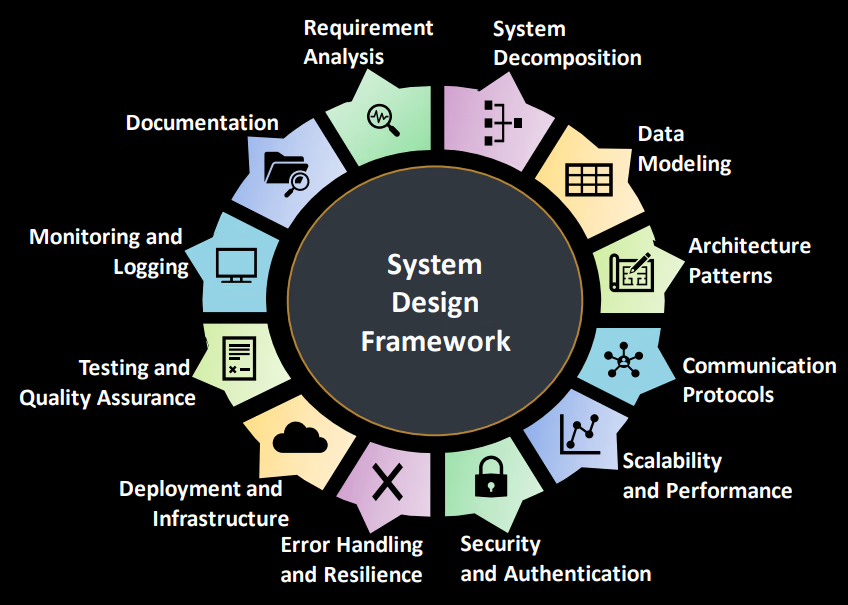
Lesson 2: System Design Framework
Designing complex systems requires a robust framework to ensure each component operates smoothly within the overall architecture. In this lesson, we’ll explore the essential components of a System Design Framework, from requirement analysis to documentation, which will help you build scalable, efficient, and maintainable systems.
1. Requirement Analysis
Purpose: Understanding functional and non-functional requirements is critical for guiding design decisions and meeting business goals.
Steps: Conduct stakeholder interviews, set scope boundaries, and identify system constraints.
2. System Decomposition
Purpose: Breaking down complex systems into manageable, modular components simplifies development and maintenance.
Approach: Define major components like frontend, backend, and database layers, and identify dependencies.
3. Data Modeling
Purpose: Constructing an effective data model helps define relationships and data flow across the system.
Key Focus: Choose between relational and NoSQL databases, optimize data structures, and map out entities and attributes.
4. Architecture Patterns
Purpose: Patterns like microservices, monoliths, or serverless architectures impact system scalability, flexibility, and deployment.
Considerations: Assess trade-offs for each pattern based on project goals, scalability needs, and technical stack.
5. Communication Protocols
Purpose: Effective communication protocols (e.g., REST, gRPC) ensure seamless data exchange between components.
Choice Factors: Latency requirements, message size, and technology stack.
6. Scalability and Performance
Purpose: Systems must handle increased load with minimal degradation.
Methods: Load balancing, database replication, and efficient caching strategies.
7. Security and Authentication
Purpose: Protecting user data and system integrity.
Approaches: Implement secure authentication, enforce data encryption, and follow best practices for API security.
8. Error Handling and Resilience
Purpose: Design for fault tolerance and graceful degradation during failures.
Strategies: Circuit breakers, retries, and failover mechanisms.
9. Deployment and Infrastructure
Purpose: Streamline release cycles and manage resources effectively.
Focus Areas: Containerization (e.g., Docker), CI/CD pipelines, and cloud infrastructure.
10. Testing and Quality Assurance
Purpose: Ensure system stability and performance.
Best Practices: Employ unit, integration, and end-to-end testing across system components.
11. Monitoring and Logging
Purpose: Continuously track system health and identify issues early.
Tools: Utilize tools like Prometheus and Grafana for real-time monitoring and Elasticsearch for centralized logging.
12. Documentation
Purpose: Clear, organized documentation helps streamline onboarding and system maintenance.
Include: API documentation, architecture diagrams, and troubleshooting guides.
Popular System Design Frameworks
Here are a few widely-adopted frameworks that follow structured approaches to system design:
4+1 Architectural View Model: Organizes system design into logical, process, development, and physical views, plus a use-case view.
C4 Model: Focuses on Context, Container, Component, and Code levels to document system architecture clearly.
TOGAF: An enterprise framework for defining and organizing IT architecture.
SABSA: A security-oriented framework tailored for complex systems.
